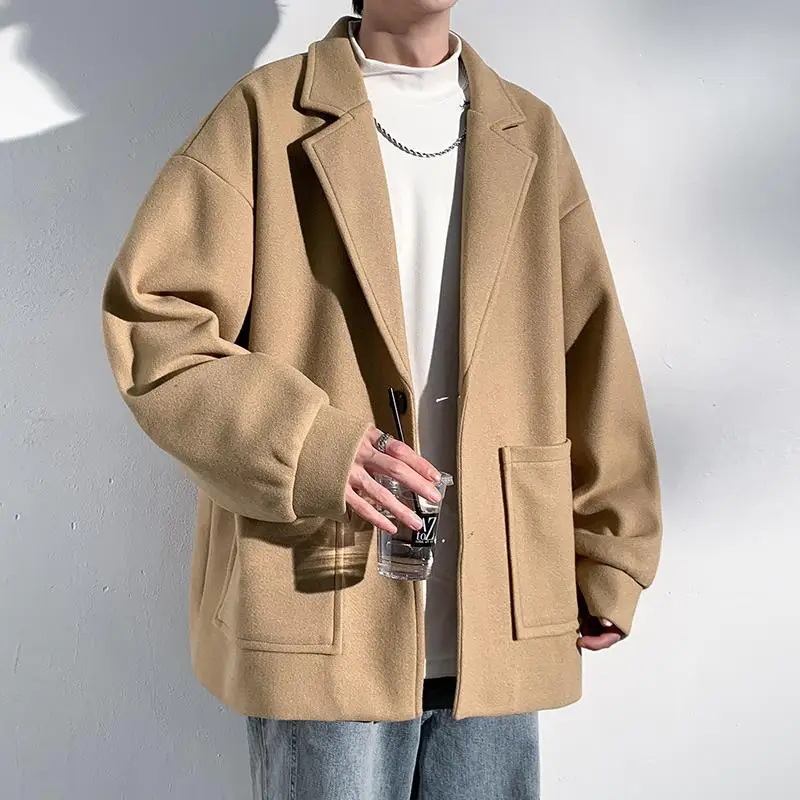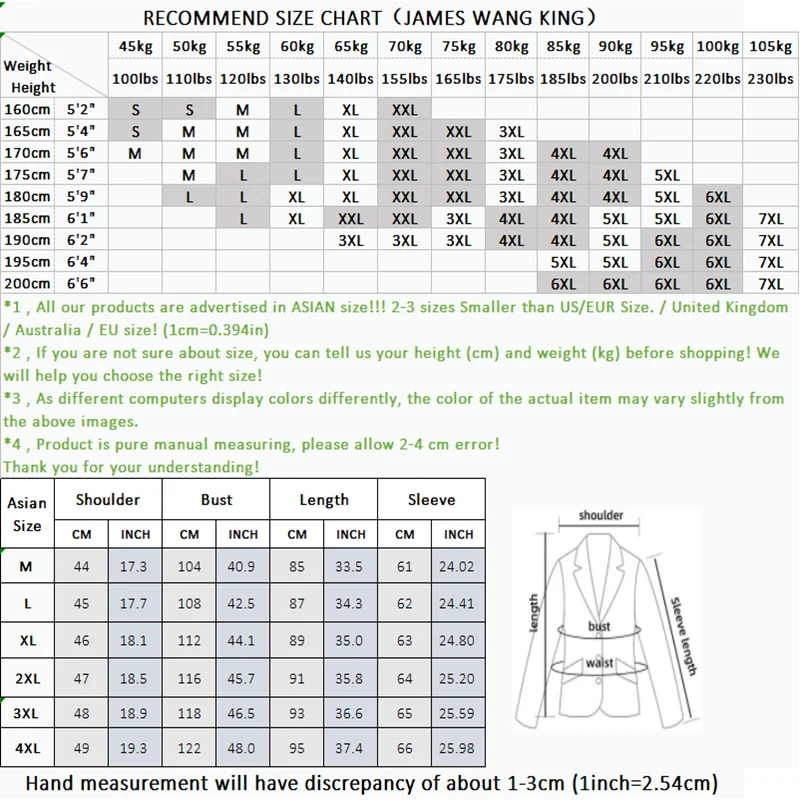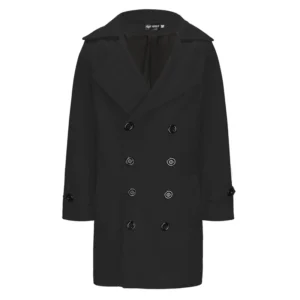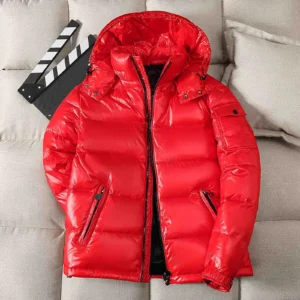Understanding Cashmere: The Luxury Fiber Behind Your Dream Coat
Cashmere represents the pinnacle of natural luxury fibers, sourced exclusively from the soft undercoat of Cashmere goats that primarily inhabit the harsh mountainous regions of Mongolia, China, and parts of Central Asia. This remarkable material isn’t just expensive because of tradition—its rarity and incredible natural properties truly set it apart. Each Cashmere goat produces only about 150-200 grams of usable fiber annually, meaning a single coat might require the annual harvest from four or more goats.
What makes cashmere truly exceptional is its unique combination of qualities. It provides extraordinary warmth despite being incredibly lightweight, offers unmatched softness against the skin, and delivers a natural elegance that synthetic materials simply cannot replicate. This rare combination has made cashmere a symbol of luxury for centuries, prized by royalty and discerning fashion enthusiasts alike.
When shopping for a cashmere coat, you’ll quickly encounter an important distinction: pure cashmere versus cashmere blends. This choice significantly impacts everything from how your coat feels and performs to how long it will last and how much it will cost. Making an informed decision about choosing your perfect cashmere overcoat requires understanding the nuances of both options.
In this comprehensive guide, we’ll explore everything you need to know to make the right choice for your lifestyle, climate, and budget.
Pure Cashmere: The Epitome of Luxury and Warmth
Pure cashmere coats contain 100% cashmere fiber with no additional materials blended in. However, not all pure cashmere is created equal. The industry recognizes three primary grades of cashmere quality:
- Grade A: The finest and longest fibers (typically 14-15.5 microns in diameter), producing the softest, most luxurious fabric with minimal pilling
- Grade B: Medium-fine fibers (around 16-19 microns), still very soft but slightly less refined than Grade A
- Grade C: Coarser fibers (19+ microns), still considered cashmere but with less softness and more potential for pilling
Pure cashmere coats offer several exceptional qualities that make them highly coveted:
- Unparalleled softness: The extraordinarily fine fibers create a fabric with a smooth, almost silky hand feel that gets better with age
- Remarkable warmth-to-weight ratio: Pure cashmere provides up to eight times more insulation than regular wool while remaining extraordinarily lightweight
- Natural temperature regulation: Cashmere adapts to your body temperature, keeping you warm in cold weather while preventing overheating
- Elegant drape and appearance: The natural fall and flow of cashmere creates a sophisticated silhouette that flatters the wearer
- Investment value: A quality pure cashmere coat, when properly cared for, can last decades while maintaining its beauty
The finest pure cashmere coats represent more than just winter outerwear—they’re heirloom-quality pieces that often appreciate in value over time. Many find that 100% cashmere coats provide exceptional warmth even in very cold conditions, making them practical luxury investments for those living in colder climates.
The Reality of Cashmere Blends: What You’re Actually Getting
Cashmere blends combine cashmere fiber with one or more additional materials. For a garment to be marketed as a “cashmere blend,” industry standards typically require it contain at least 5-10% cashmere, though quality blends usually contain significantly more—often 30% to 70% cashmere.
Manufacturers create blended cashmere fabrics for several compelling reasons. Blends can enhance durability, improve certain performance aspects, create specific aesthetic qualities, and perhaps most importantly for many consumers, reduce the overall cost of the garment while still providing some of cashmere’s desirable properties.
Common materials used in cashmere blends include:
- Wool: Adds durability, structure, and reduces cost while maintaining good insulation properties
- Silk: Provides luxurious sheen, strength, and smooth texture while enhancing drape
- Cotton: Introduces breathability and reduces cost, making garments more suitable for milder climates
- Synthetic fibers (polyamide, polyester, acrylic): Significantly reduces cost while improving shape retention and resistance to stretching
The percentage of cashmere dramatically affects the overall feel and performance of the blend. Higher cashmere content (above 50%) generally preserves more of pure cashmere’s desirable properties, while lower percentages (below 30%) may feel noticeably different from pure cashmere.
Common ratios found in quality coats include 70/30 cashmere-wool blends, which balance luxury feel with improved durability, and 90/10 cashmere-silk blends, which enhance drape while maintaining most of cashmere’s natural softness. For those exploring options beyond pure cashmere, wool blend coats offer an excellent introduction to luxury outerwear at more accessible price points.
Cashmere-Wool Blends: The Popular Middle Ground
Cashmere-wool blends represent perhaps the most practical and popular option in the luxury coat market. These blends typically contain between 30% and 70% cashmere, with the remainder being high-quality wool—usually merino or other fine wool varieties.
This combination creates a fabric with unique advantages. The wool content adds substantial structure and durability to the garment, significantly reducing the pilling that pure cashmere can experience with regular wear. The resulting coat holds its shape better over time while still providing much of the softness and warmth that makes cashmere desirable.
In terms of performance, cashmere-wool blends excel in versatility. They handle temperature fluctuations well, proving practical for everyday wear in varying conditions. They also tend to be more resistant to the effects of light moisture and daily friction, making them suitable for regular commuting and professional environments.
Price-wise, quality cashmere-wool blends typically cost 30-50% less than comparable pure cashmere coats while offering potentially greater longevity for active wearers. For many men seeking a balance of luxury and practicality, exploring wool coats with cashmere blending represents a smart investment in their wardrobe.

Luxury Blends: Cashmere with Silk and Premium Fibers
At the high end of cashmere blends are combinations that pair cashmere with other luxury natural fibers. Cashmere-silk blends offer particularly remarkable qualities, combining the warmth of cashmere with silk’s natural strength and luminosity. These premium blends typically maintain a high cashmere content (70-90%) with just enough silk (10-30%) to enhance the fabric’s performance.
The addition of silk creates a distinctive visual dimension—a subtle sheen that catches light in a way pure cashmere cannot. It also improves the fabric’s drape, creating a fluid silhouette that moves elegantly with the wearer. Perhaps most importantly, silk adds tensile strength to the fabric, reducing pilling and extending the garment’s life while maintaining extraordinary softness.
Even more exclusive are blends incorporating other rare luxury fibers such as vicuña or baby alpaca. These combinations create truly exceptional coats that can actually surpass pure cashmere in certain qualities. For those seeking the absolute pinnacle of luxury outerwear, premium cashmere overcoats with specialized fiber blending offer an unparalleled experience.
Economy Blends: Cashmere with Cotton and Synthetics
At the more accessible end of the spectrum are cashmere blends incorporating cotton or synthetic fibers. These blends typically contain between 5% and 30% cashmere, with the majority being less expensive materials like cotton, polyester, acrylic, or nylon.
Cashmere-cotton blends offer better breathability than pure cashmere, making them suitable for milder climates or transitional seasons. They’re generally less expensive while still providing some of cashmere’s softness, though they lack its exceptional warmth and luxurious drape.
Synthetic blends, while the most affordable option, represent the greatest compromise in the cashmere experience. These coats may resist wrinkles better and maintain their shape well, but they typically can’t replicate the natural heat regulation, softness, or elegant aging process of higher cashmere content garments.
These economy blends make the most sense for occasional wear, warmer climates, or as an introduction to cashmere. Their lower price point (often 60-80% less than pure cashmere) makes them accessible, though they won’t deliver the full luxury experience or longevity of better quality options. Understanding these differences is similar to learning about merino wool compared to regular wool coats—the details matter when making an informed purchase.
Head-to-Head: Pure vs. Blend Comparison for Key Coat Attributes
| Attribute | Pure Cashmere | High-Quality Blend (50%+ cashmere) | Economy Blend (5-30% cashmere) |
|---|---|---|---|
| Softness | Exceptional, unmatched | Very good to excellent | Moderate to good |
| Warmth | Superior insulation | Very good insulation | Good to moderate |
| Weight | Extremely lightweight | Light to moderate | Moderate to heavy |
| Pilling Resistance | Moderate (needs careful care) | Good (better than pure) | Variable (depends on blend) |
| Shape Retention | Good with proper care | Very good | Excellent with synthetic blends |
| Care Requirements | High maintenance | Moderate maintenance | Lower maintenance |
| Expected Longevity | 10+ years with proper care | 7-10 years | 3-7 years |
| Appearance Over Time | Improves and softens | Maintains well | May degrade more visibly |
| Environmental Impact | Low (natural, biodegradable) | Low to moderate | Higher with synthetics |
| Price Range | $$$$ (Premium) | $$-$$$ (Mid to High) | $-$$ (Budget to Mid) |
The significance of these differences varies depending on your intended use. For a coat you’ll wear daily in harsh winter conditions, durability and warmth become paramount concerns. In this scenario, a high-quality cashmere-wool blend might actually outperform pure cashmere despite being less luxurious to the touch.
Conversely, if you’re seeking a special occasion coat or live in a milder climate, the unparalleled softness and lightweight warmth of pure cashmere might justify its premium price and higher maintenance requirements. Many discerning buyers consider pure cashmere to be a timeless investment in their wardrobe, appreciating with wear rather than degrading.

Quality Assessment: How to Identify Superior Cashmere in Any Form
Whether you’re investing in pure cashmere or a blend, these practical assessment techniques will help you identify quality:
The Touch Test: Superior cashmere should feel incredibly soft but not slippery. It should have a slight resistance when you run your hand across it, indicating dense, fine fibers. Poor-quality cashmere or low-percentage blends often feel either too slick or slightly scratchy.
Visual Examination: Look for a subtle luster rather than a shiny appearance. The fabric should have even color distribution and a visible but fine surface “halo.” Examine the fabric against light to check for consistency in the weave—irregularities often indicate lower quality.
The Pill Test: Gently rub a small area between your fingers for about 30 seconds. Quality cashmere should resist immediate pilling. Excessive fuzz formation suggests shorter, weaker fibers that will deteriorate quickly.
The Wrinkle Test: Bunch the fabric in your hand for a few seconds, then release. High-quality cashmere will return to its original state quickly with minimal creasing. Poor recovery indicates lower grade fibers or problematic blending.
The Label Test: Look beyond just the word “cashmere.” Quality producers will specify details like fiber grade, cashmere percentage in blends, and origin. Be wary of vague descriptions like “cashmere touch” or “cashmere feel”—these often indicate minimal or no actual cashmere content.
Red flags that suggest inferior quality include excessive sheen, immediate pilling when touched, unusually low prices for claimed pure cashmere, and reluctance from the seller to provide specific composition details. Understanding these quality indicators helps ensure you get what you pay for, regardless of whether you choose pure or blended cashmere. For more detailed guidance on evaluating quality and fit, explore our guide on mastering cashmere overcoat fit and comfort.
Expert Care Guide: Maintaining Your Cashmere Coat’s Beauty
Proper care dramatically extends the life of your cashmere coat, whether pure or blended:
Storage Do’s:
– Store in breathable cotton garment bags, never plastic
– Use cedar blocks or sachets to repel moths naturally
– Hang on shaped, sturdy wooden hangers
– Ensure the coat is clean before seasonal storage
– Allow space between garments for air circulation
Storage Don’ts:
– Don’t compress cashmere for long periods
– Avoid exposure to direct sunlight during storage
– Never store in damp conditions
– Don’t use mothballs (they leave unpleasant odors)
Cleaning Guidelines:
– Air out your coat regularly rather than cleaning after every wear
– Spot clean minor marks with a damp cloth and mild soap
– Professional dry clean only 1-2 times per season
– For blends, follow the care instructions for the most delicate fiber in the mix
Pilling Management:
– Use a cashmere comb or specialty fabric shaver
– Remove pills gently in one direction
– Never pull pills with your fingers
– Address pilling promptly before it worsens
Emergency Care:
– Blot spills immediately—never rub
– For liquid stains, absorb with a clean cloth
– Allow wet areas to dry naturally—never use direct heat
– Consult professionals for serious stains
These care principles apply to both pure cashmere and blends, though higher cashmere content generally requires more careful attention. For more specific care information related to wool components in your coat, our guide to wool overcoats provides additional maintenance tips.
Finding Your Perfect Match: A Buyer’s Decision Framework
To determine whether pure cashmere or a blend best suits your needs, consider these key factors:
Climate Considerations:
For severely cold winters, pure cashmere or high-percentage cashmere-wool blends offer superior insulation. In milder or variable climates, cashmere-cotton or lighter wool blends provide better versatility.
Lifestyle Assessment:
If you need a coat for daily commuting in urban environments, a durable cashmere-wool blend may prove more practical. For special occasions or limited wear, pure cashmere’s luxury feel might be worth the additional care requirements.
Budget Reality Check:
Pure cashmere represents a significant investment—often $1,000-3,000 for a quality coat. High-quality blends (50%+ cashmere) typically range from $500-1,500, while economy blends can be found under $500.
Texture Sensitivity:
If ultimate softness is your priority, only pure cashmere or very high-percentage luxury blends will satisfy. Those less sensitive to textile nuances might be perfectly content with well-made economy blends.
Maintenance Willingness:
Be honest about your willingness to care for your garment. Pure cashmere rewards careful maintenance but punishes neglect. Lower-maintenance blends might better serve those with busy lifestyles.
For example, a finance professional who commutes daily in a cold climate might prefer a 70/30 cashmere-wool blend that balances luxury with durability. Meanwhile, someone seeking a special occasion coat for moderate winters might find pure cashmere ideal despite its higher price. When considering coat styles, understanding the differences between double-breasted versus single-breasted designs can further refine your selection.
Mens Heavy Winter Coat, Mens Insulated Coat, Mens Parka Coat
Price range: $175.52 through $237.36 Select options This product has multiple variants. The options may be chosen on the product pageMens Big and Tall Winter Coats, Mens Down Coat, Mens Hooded Winter Coat, Mens Puffer Coat
Price range: $126.44 through $217.01 Select options This product has multiple variants. The options may be chosen on the product pageMens Big and Tall Winter Coats, Mens Hooded Winter Coat
Price range: $80.32 through $106.68 Select options This product has multiple variants. The options may be chosen on the product pageMens Double Breasted Pea Coat, Mens Wool Blend Coat, Mens Wool Pea Coat
Price range: $136.84 through $157.36 Select options This product has multiple variants. The options may be chosen on the product pageMens Cashmere Overcoat, Mens Hooded Winter Coat, Mens Wool Blend Coat
Price range: $128.72 through $139.68 Select options This product has multiple variants. The options may be chosen on the product pageMens Hooded Winter Coat, Mens Insulated Coat, Mens Puffer Coat, Mens Quilted Coat
Price range: $139.88 through $177.72 Select options This product has multiple variants. The options may be chosen on the product page
Are Cashmere Blends Worth It? The Final Verdict
After examining all aspects of pure cashmere versus blends, several balanced conclusions emerge:
High-quality cashmere blends (containing 50% or more cashmere) often represent the best value proposition for most buyers. They deliver much of pure cashmere’s luxury while addressing its vulnerability to wear and reducing cost significantly. For everyday wear in varying conditions, these blends frequently outperform pure cashmere in longevity.
Pure cashmere remains unmatched for those prioritizing the absolute finest feel, prestigious heritage, and the unique way it molds to the wearer over time. It represents a genuine luxury investment that, with proper care, can provide decades of enjoyment and even appreciate in value.
The lowest-percentage cashmere blends (under 20% cashmere) should be approached with realistic expectations. While they may capture some cashmere qualities at accessible price points, they won’t deliver the transformative experience that makes higher-quality options so coveted.
A common misconception is that pure cashmere always represents the best choice. In reality, the “right” choice depends entirely on your specific needs, expectations, and circumstances. Many connoisseurs actually own both—pure cashmere for special occasions and high-quality blends for everyday wear. For more perspective on value considerations, our article on whether a cashmere overcoat is worth the investment offers additional insights.
Beyond Cashmere: Alternative Luxury Coat Materials Worth Considering
While comparing pure cashmere to blends, it’s worth considering other exceptional coating materials that compete in the luxury space:
Camel Hair offers remarkable insulation with a distinctive golden hue and slightly coarser hand feel than cashmere. It provides excellent durability while maintaining elegance.
Alpaca delivers extraordinary softness approaching cashmere but with superior strength and natural water-resistance. It’s hypoallergenic and lacks the lanolin found in wool.
Fine Merino Wool provides exceptional softness for a wool, with natural elasticity and excellent temperature regulation at a more accessible price than cashmere.
High-Grade Lambswool offers a buttery softness with natural crimp that creates effective insulation while maintaining breathability.
These alternatives sometimes appear in luxury blends themselves, combining their distinct advantages with cashmere’s exceptional properties. Exploring our collection of men’s overcoats reveals how these materials compare in actual garments.
FAQ: Your Cashmere Coat Questions Answered
Does cashmere pill more than wool?
Yes, pure cashmere generally pills more readily than wool due to its shorter, finer fibers. High-quality cashmere pills less than lower grades, and blending cashmere with wool or silk significantly reduces pilling. Regular maintenance with a cashmere comb prevents excessive pilling.
What exactly makes cashmere so expensive?
Cashmere’s high cost stems from its extreme scarcity and labor-intensive collection process. Each goat produces only 150-200 grams of usable fiber annually, and the fibers must be carefully harvested by hand during the spring molting season. Add to this the meticulous sorting, cleaning, and processing required, and the resulting material remains one of the world’s most limited luxury textiles.
Which coat styles work best in pure cashmere vs. blends?
Pure cashmere excels in simpler, classic designs like single-breasted overcoats and elegant wrap styles where its natural drape enhances the silhouette. Structured styles like peacoats, double-breasted coats, and military-inspired designs often benefit from cashmere-wool blends, which provide better structure retention while maintaining warmth.
Is a higher cashmere percentage always better in blends?
Not necessarily. The optimal cashmere percentage depends on the coat’s intended use. For luxury feel with improved durability, 50-70% cashmere blends often perform best. Very high cashmere percentages (85%+) approach pure cashmere in both benefits and limitations, while very low percentages (below 20%) may offer minimal cashmere benefits.
How can you tell if cashmere is high quality?
High-quality cashmere has consistent, even coloration; creates minimal lint when rubbed; feels incredibly soft without being slippery; recovers quickly from wrinkling; and has a subtle, natural luster rather than a shiny appearance. The label should specify Grade A cashmere and/or long fiber content for the finest quality.
Does a cashmere coat need special storage?
Yes. Cashmere coats should be stored in breathable cotton garment bags (never plastic) with cedar elements to deter moths. They should hang on sturdy, shaped wooden hangers to maintain their structure, and be clean before storage. Climate-controlled conditions away from direct sunlight prevent damage during off-season storage.
For seasonal outerwear options beyond cashmere, our collection of men’s winter coats offers additional alternatives to explore.







